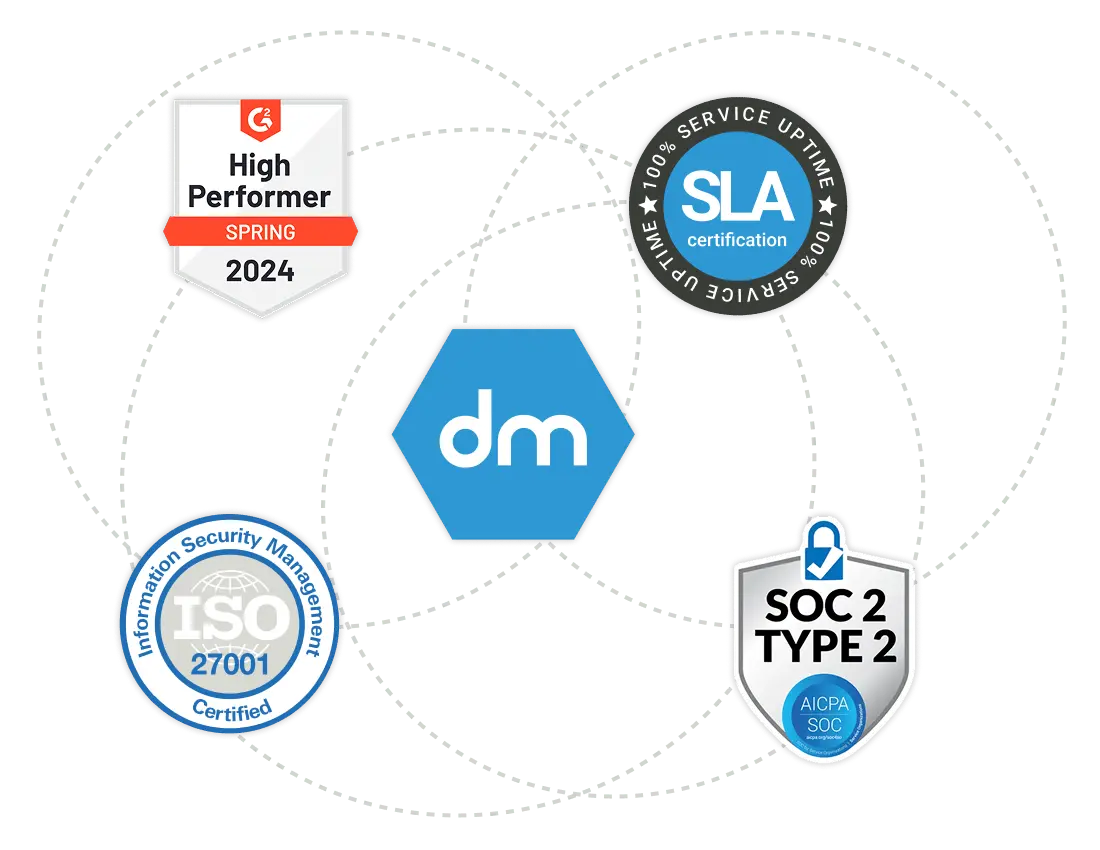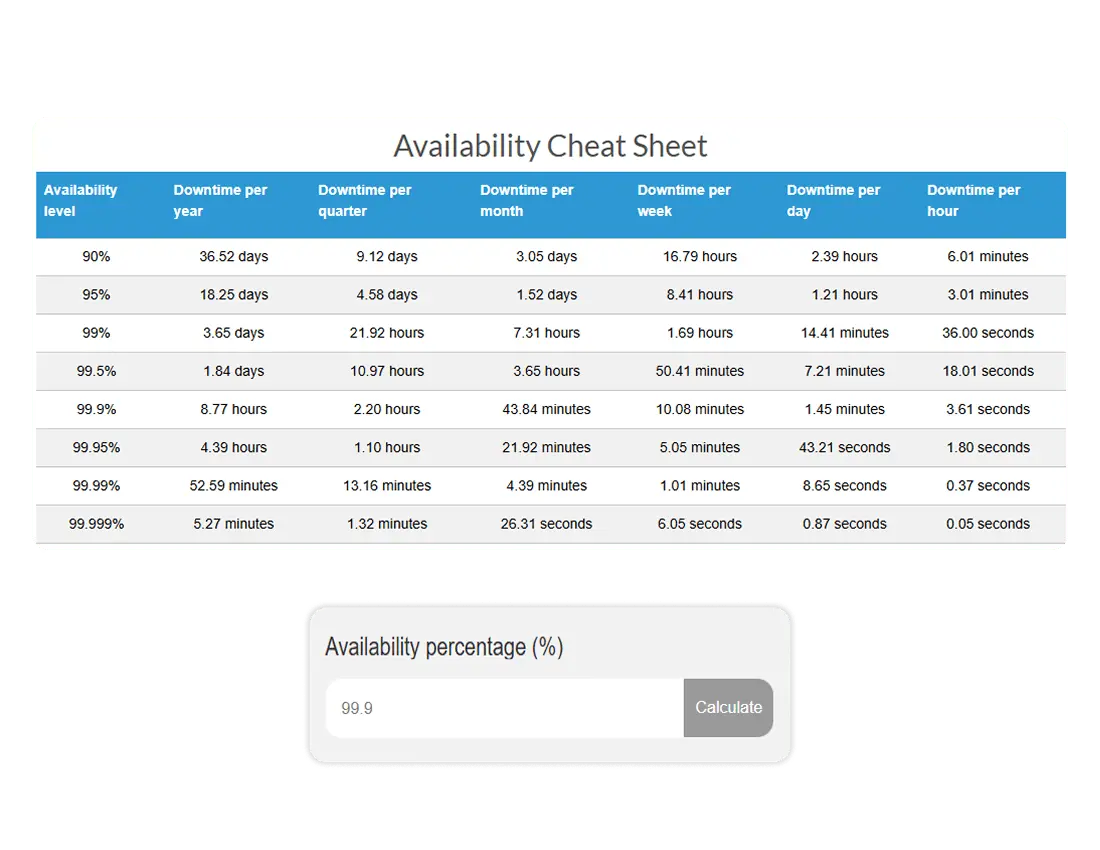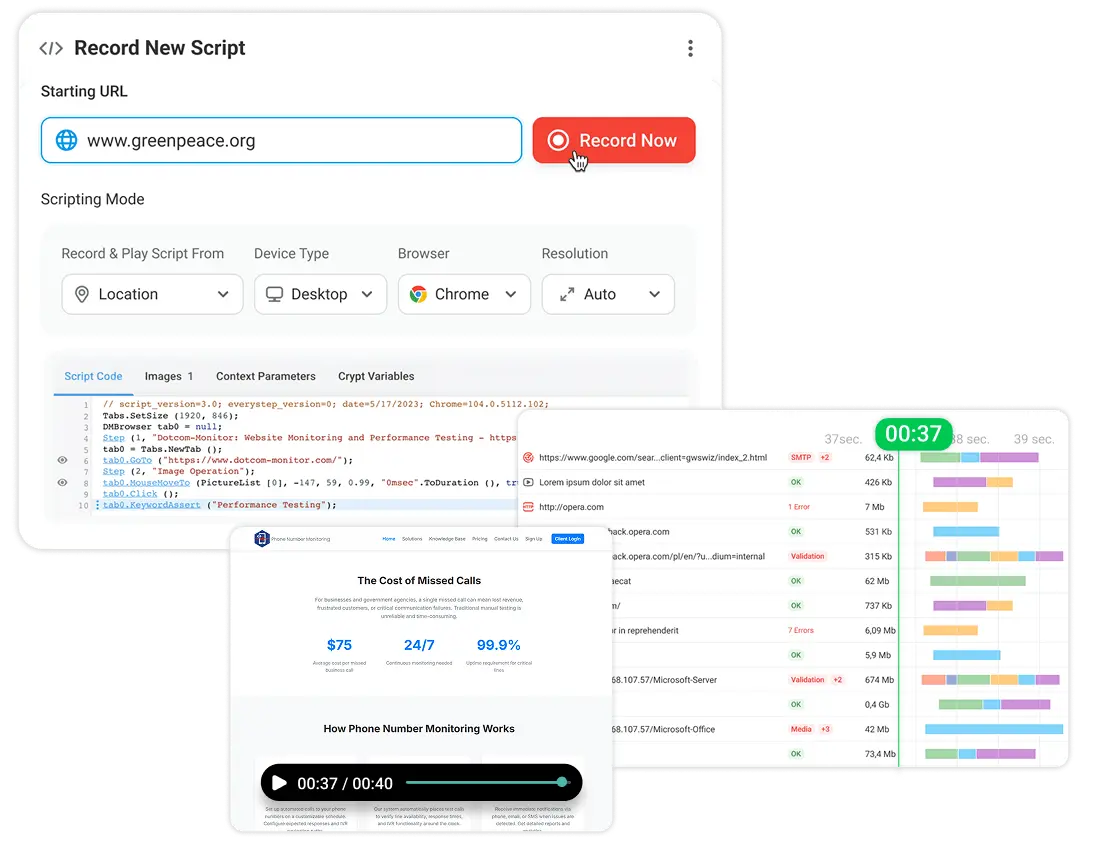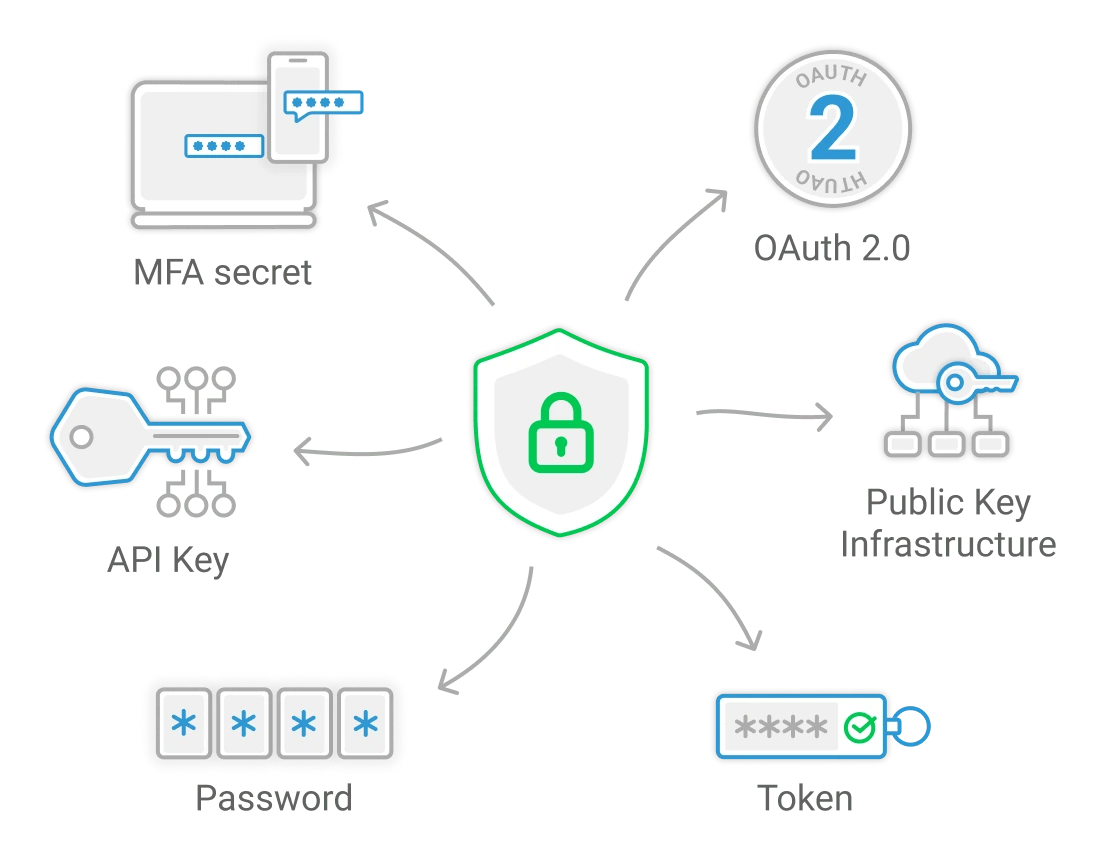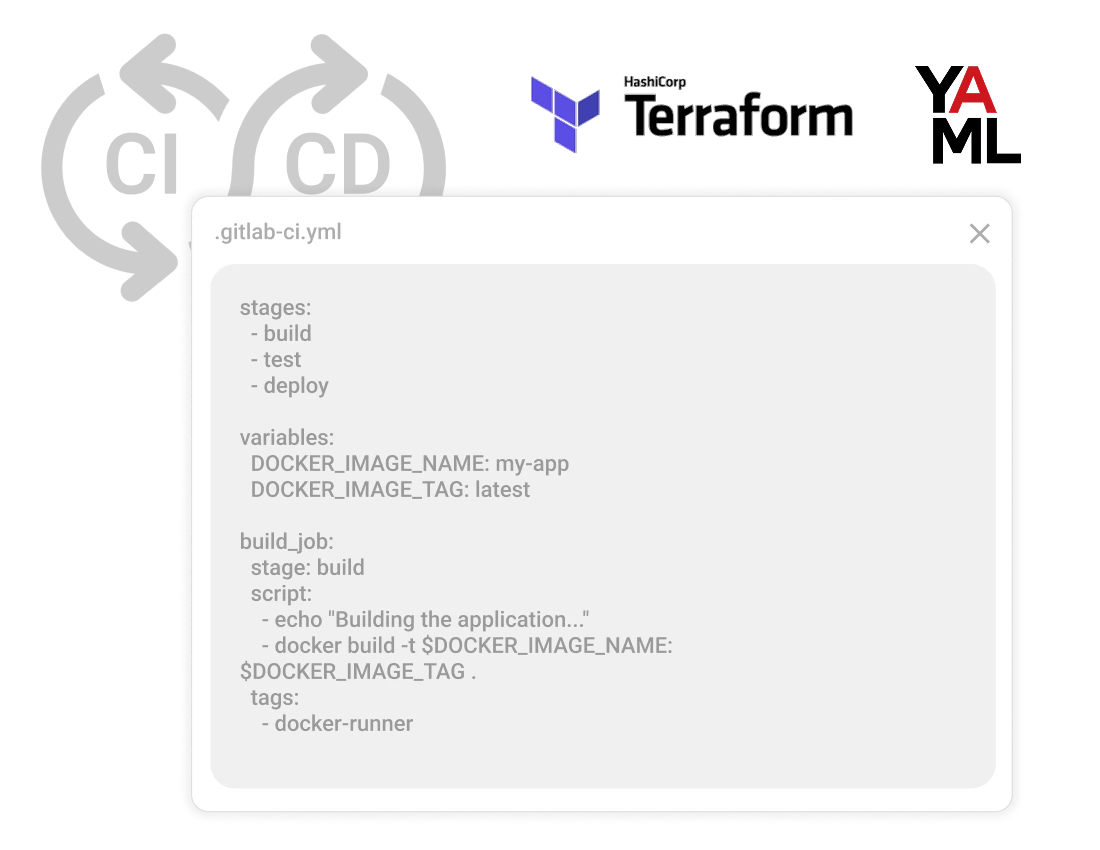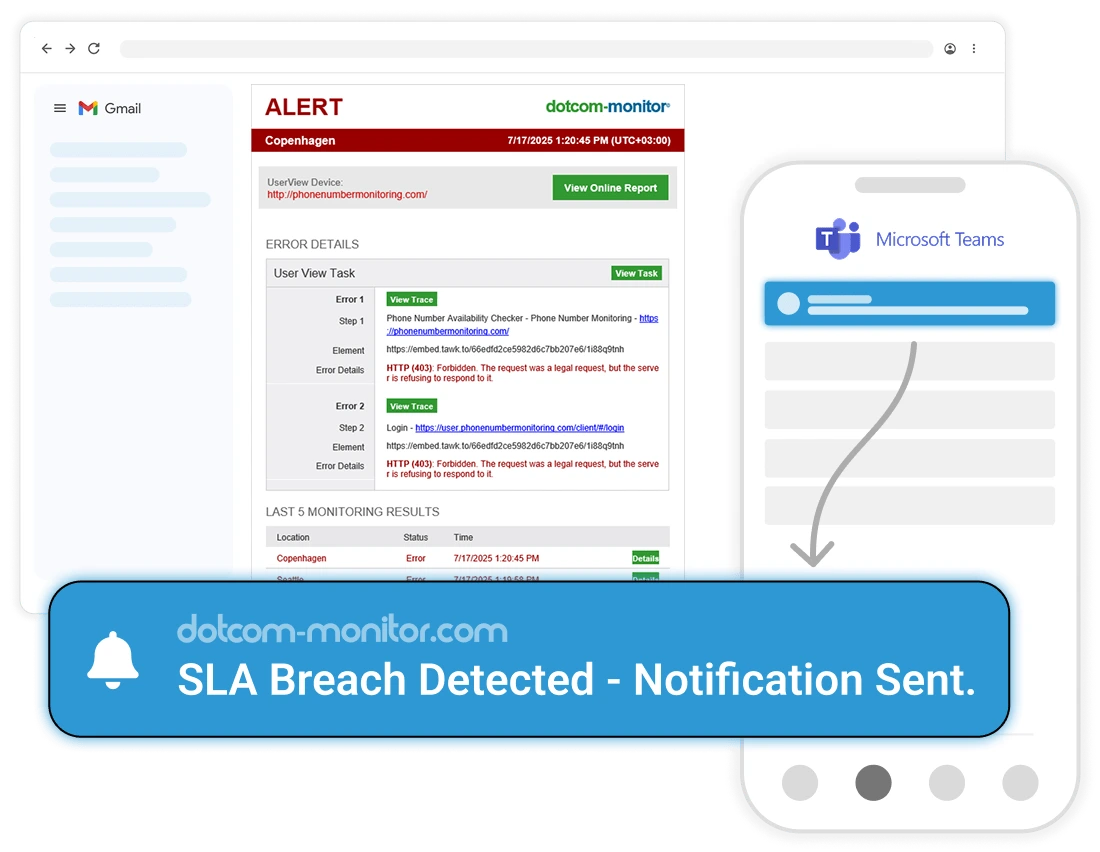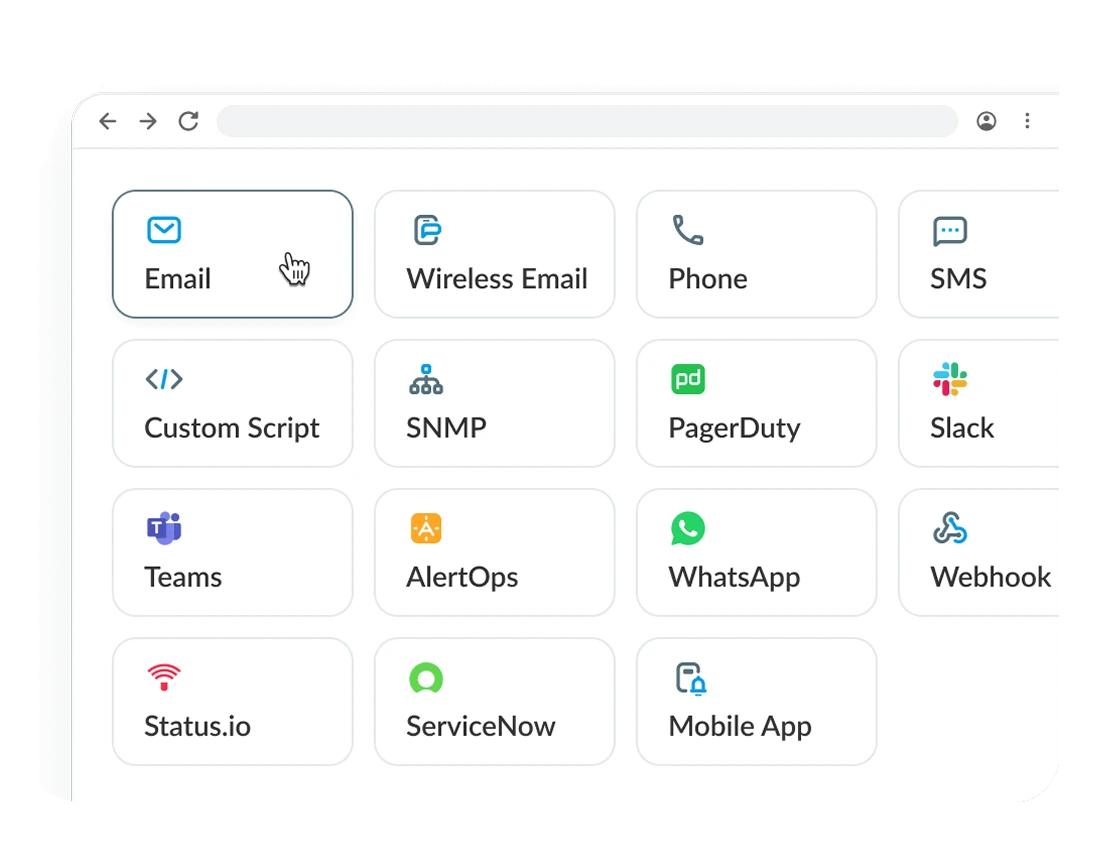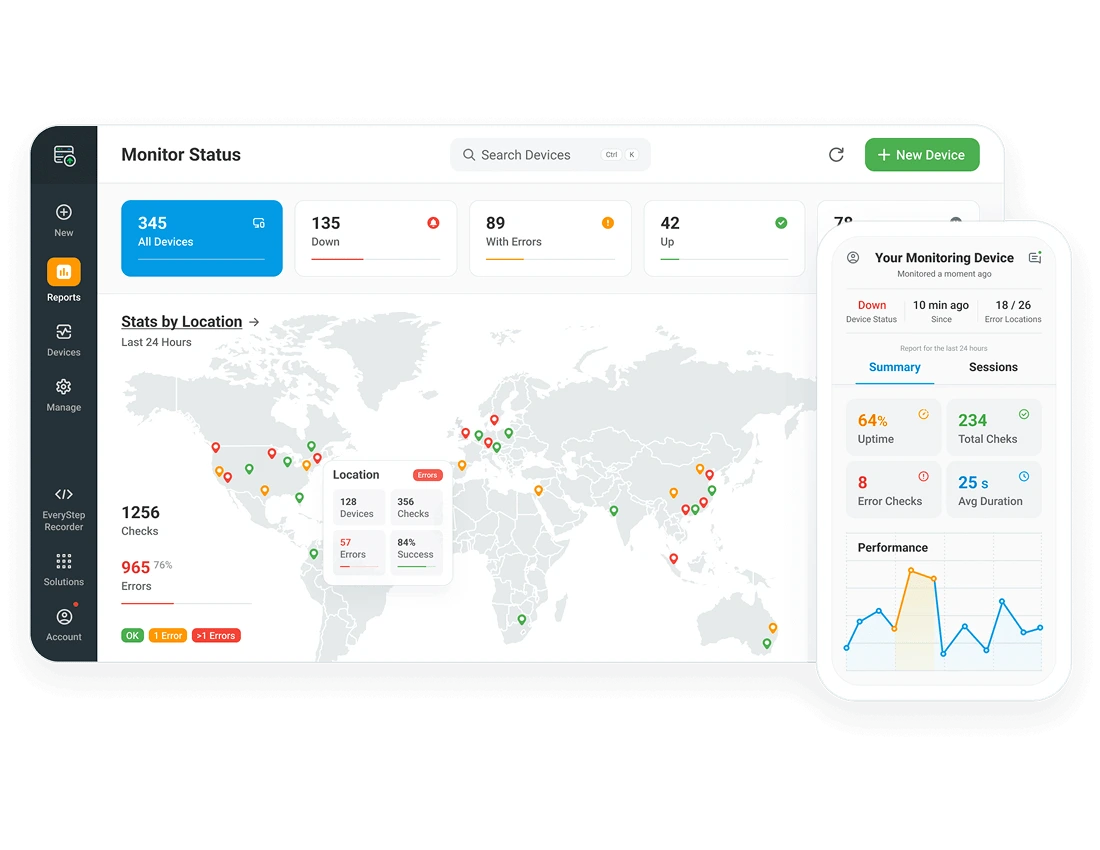Dotcom-Monitor’s Web API Monitoring platform takes this a step further with synthetic monitoring, executing simulated customer workflows to test endpoints from global probe locations. The platform validates every response against assertions (e.g., authentication, token validation, data integrity), captures real-time metrics on performance and security, and pinpoints failures before they impact users.
By combining functional, performance, and compliance monitoring, Dotcom-Monitor empowers engineering teams to:
- Detect and resolve issues proactively.
- Ensure API reliability across multi-step transactions.
- Maintain compliance with frameworks like GDPR and HIPAA.
- Deliver faster, more dependable user experiences.
Example: A simulated flow might test POST /login → GET /cart → POST /order and confirm 200 status with a valid JSONPath response—ensuring the entire workflow executes flawlessly.
